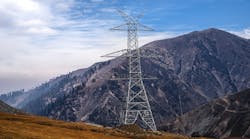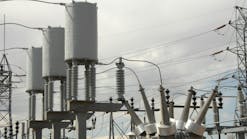India is the world's third largest producer and the fourth largest consumer of electricity. The demand for electricity in the country is driven by sustained economic growth and the thrust to provide continuous power to all. The global movement to electrify transportation and manufacturing sectors will also significantly add to India’s power needs.
On the generation front, India has a vision to integrate an additional 225 GW of renewable energy into the grid by 2022, over and above the current generation capacity of 350 GW. The scale and speed of renewable integration in the country is unprecedented.
As with everything else, energy needs to be provided at affordable rates to Indian consumers for such an electrification program to be viable. While technology costs continue to fall rapidly, the Indian government has leveraged innovative methods to ensure affordability in all its plans. Business models like PPP and private concessions have helped in this.
India is building a massive story around providing reliable access to power for more than a billion people. Research shows that access to reliable electricity provides more prosperity to communities that other public utilities like healthcare and sanitation. This is one of the biggest opportunities to empower people globally and we are fortunate to be playing an active part in this revolution.
The Indian Transmission Story
The Indian power sector is in a unique situation: while the cost of generation has fallen rapidly — as much as 80% for renewables — and demand is poised to grow at a fast pace, access to power continues to be a challenge. In other words, generation capacity is abundant and affordable, people want more of it, yet cannot seem to have access to it. Energy access has become more of a transportation challenge than a production challenge.
The challenges of power transportation are on three fronts: time, space and capital.
- Project construction timelines will need to keep pace with the “new normal” of record time of commissioning of renewable generation, which is a fraction of the ones for thermal generation.
- As the world gets increasingly urbanized, and more people move to cities than rural areas, greenfield projects might not have adequate space as they compete with much needed city infrastructure. Land acquisition for new infrastructure will be an even bigger constraint going forward and refurbishing/repurposing existing infrastructure will be key to solving this.
- The massive volume of investment needed to build the requisite amount of transmission capacity will have to be financed through innovative long-term capital, and no longer through government balancesheets. Intermittency of renewables will increase the quantum of transmission capacity needed, which will translate to even higher investments. The conventional models of financing these through “Regulated Asset Base” schemes will not be viable in such a context.
Disruptive innovation is critical to meet the challenges of time, space and capital to enable reliable power access for all.
Sterlite Power – Disrupting the Sector
At Northern Region System Strengthening (NRSS)-29, Kashmir — one of Sterlite's toughest transmission projects globally — we were able to overcome incredible challenges of mountainous terrain, bio-diversity protection, extreme weather, and war-like conditions to commission this key asset ahead of schedule. This 414-km long line will ensure reliable power access for the valley by augmenting the state’s power transmission capacity by about 33%. In its eight-year journey of becoming the largest private-sector transmission company in India, Sterlite has a track record of completing projects, on an average, six months ahead of contracted schedule.
In another project in southern India, we tackled acute shortage of space — in a region with the highest population density in India — by upgrading an existing transmission line. Replacing an old 66 kV line with two circuits of 110 kV HTLS increased the current-carrying capacity 10 to 15 times. This asset will now become the lifeline for delivering clean power from Tamil Nadu to the power-hungry state of Kerala.
Responding to challenges of capital, Sterlite Power has launched a unique yieldCo model, called Infrastructure Investments Trust, that allows ordinary investors to own and finance transmission assets and earn a long-term, stable, tax-free yield. This allows infrastructure to be built using public savings rather than government balance sheets and is a much wider pool of capital in a savings-centric economy like India.
Kashmir Project: Innovation Unbound
The NRSS-29 project is a transmission line conceived by the Indian government in 2012 to improve transmission capacity in the Kashmir valley by 33%. We bagged the project in 2014 and recently commissioned the line, two months ahead of schedule. The challenges the project had to contend with include: a) the toughest terrains—the highest tower erected is 3,200 m high, on the awe-inspiring Pir Panjal range—that necessitated use of heavy-lift helicranes from the United States; b) weather, with snow making the valley pretty much inaccessible for half the year; and c) safety, with the valley practically being a war zone for the past two or three years.
This project has set a new standard, thanks to planning, innovative execution practices and sharp project financing.
Going Global with the Toolkit, with a Focus on Emerging Markets
We strongly believe that a full suite of innovative solutions like the NRSS is critical to deliver reliable power to the last billion people without it. With an eye on this challenge, Sterlite Power is taking its innovation toolkit to other parts of the world. The emerging markets, being the last frontiers lacking energy access, are a key area of focus for us.
We have seen rapid success in the Brazil market by leveraging our innovation toolkit. Our entire portfolio of Brazilian assets, currently valued at US$2 billion, leverages solutions that tackle the challenges of time, space and capital. Our first project in the northeast of Brazil is expected to be completed two years ahead of schedule.
The emerging markets have historically had the worst problems of energy access. Necessity is the mother of invention, which has led us to believe that the best innovations in the power sector will come from emerging markets. Through these innovations, we will play a role in the inevitable extinction of energy shortage.


